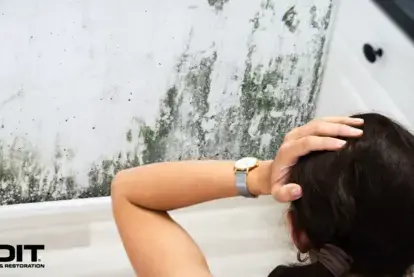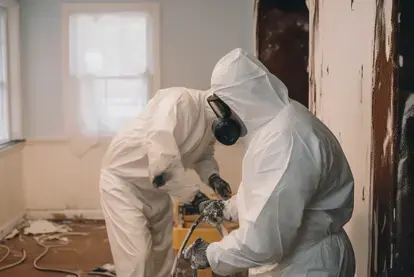
How to Dry Carpet After a Flood
Contact COIT for a professional cleaning!
Dealing with a flooded carpet can be overwhelming—it's not just about the water, there's also potential damage to your home and health risks from bacteria, mold, and allergens.
Acting quickly and effectively is crucial to minimizing these risks in your home. This article will guide you through the process of drying your carpet after a flood and help you learn how to restore your space to its pre-flood condition.
Immediate Steps to Take
When your carpet is flooded, time is of the essence. Start by removing standing water using a wet vacuum or pump.
Then, increase ventilation in the area by opening windows and using fans. This helps reduce moisture and prevents mold growth.
For effective DIY carpet drying, you'll need tools like dehumidifiers, fans, and wet vacuums. Gently lift the carpet to allow air circulation underneath.
Choosing the Best Carpet Drying Equipment
Selecting the right equipment is key to effectively drying carpets. Look for powerful dehumidifiers, air movers, and wet vacuums to remove moisture efficiently and speed up the drying process. For best results, choose equipment specifically designed for flood recovery and carpet drying.
When choosing carpet drying equipment, it's also important to consider the size and layout of the affected area. Larger spaces or rooms with multiple levels may require more powerful or additional units to ensure even drying.
Look for dehumidifiers with a high capacity for moisture removal and features that allow for continuous operation. Some advanced models come with built-in hygrometers to monitor the room's humidity levels.
How Long Does Carpet Take to Dry After Flooding?
Typically, it takes about 3-5 days for a carpet to dry completely after flooding.
The length of time can vary based on the carpet material, thickness, and environmental conditions. Make sure your room has good ventilation and use dehumidifiers to speed up the process.
How Quickly Can Mold Grow Under Wet Carpet?
Mold can start growing under wet carpets within 24-48 hours after flooding. This quick growth makes it essential to start the drying process immediately after the flood to prevent mold and mildew formation.
Mold thrives in moist, warm environments, which are exactly the conditions created under a wet carpet. This environment can be especially conducive to mold if the room lacks proper ventilation.
The type of carpet and the material of the subfloor can also influence how quickly mold grows. Organic materials, such as wool carpets or wooden subfloors, are particularly susceptible to mold growth.
How to Prevent Mold From Growing Under Wet Carpet
There are a number of steps you can take to help prevent mold growth under your carpet:
- Keep the area well-ventilated and dry
- Use dehumidifiers to reduce humidity and fans to circulate air
- Consider applying anti-mold sprays or solutions specifically designed for carpets
- Regularly check for any signs of mold and address them promptly
When to Call Carpet Cleaning Professionals to Help
If the flooding is extensive or if you suspect sewage contamination, it's best to call professional carpet cleaners.
Companies like Coit specialize in flood recovery carpet cleaning and content restoration, using advanced techniques and equipment to extract water, remove contaminants, and ensure your carpet is thoroughly cleaned, dried, and restored.
Contact COIT for a professional cleaning!
Health Risks and Safety Precautions
Flooded carpets can pose health risks, especially if the water is contaminated.
Always wear protective gear like gloves and masks when handling wet carpets. This precaution helps to avoid direct contact with potentially harmful bacteria or mold spores that might be present in the water or on the carpet.
Be aware of the risks of electrical hazards in flooded areas. Water can conduct electricity, so it's essential to turn off the power in the affected area before starting any cleanup process. This step is vital to prevent electric shocks.
You should also be cautious of structural hazards. Water can weaken floors and walls, making them unstable. If you suspect any structural damage, it's best to avoid the area and seek professional help.
If the floodwater is from a contaminated source, such as sewage, it's particularly important to avoid any contact.
This type of water can carry harmful pathogens and pose serious health risks. In such cases, it's advisable to call in professionals who have the necessary equipment and expertise to handle contaminated water safely.
Finally, if you or anyone in your household starts to exhibit symptoms like respiratory issues, allergies, or skin irritations after exposure to a flooded carpet, seek medical attention immediately. These symptoms could be a sign of exposure to harmful contaminants.
Carpet Dehumidifying Tips
Dehumidifying is a critical step in drying carpets after a flood. Position your dehumidifiers strategically around the flooded area to maximize moisture extraction.
Empty the dehumidifier tanks regularly to maintain its efficiency, and use it with a fan to further enhance the drying process by circulating air.
Long-Term Care and Prevention
Once your carpet is dry and restored, ongoing care is important to prevent future issues.
Regular vacuuming, prompt attention to spills, and periodic professional cleaning can maintain the health and appearance of your carpet.
Additionally, consider waterproofing solutions or barriers in flood-prone areas as a preventative measure.
Dealing with a flooded carpet can be challenging, but with the right approach, you can effectively dry and restore your carpets.
Whether you choose DIY methods or professional services, the key is to act quickly to prevent mold growth and minimize health risks. Regular maintenance and preventive measures can help protect your carpets from future flooding.
Contact COIT
If you're facing a flooded carpet situation, COIT is here to help.
Our professional carpet cleaning and restoration services are designed to bring your carpets back to life after a flood. Trust us to handle the drying, cleaning, and restoration process with care and expertise.
Schedule your service with COIT today and take the first step towards a clean, safe, and dry home.



